About
About the Artist
The Australian Artist, Anne-Maree Hunter specialises in Lithography, Intaglio, Artists' Books & Objects. Her work is Thought-provoking, Eclectic, Eccentric and a Little Unconventional.
My artistic background is in Printmaking, especially Lithography and Etching, and I began my career as a professional artist with my first solo exhibition titled INNERBIND at Wattspace Gallery, Watt Street, Newcastle in 1993. As an undergraduate, I also became interested in Artists' Books & Objects which have become part of my répertoire, and I completed a Ph.D titled "Constructing the Eclectic Bibliothèque" in 2007. My earliest memories are of making and doing, and my way of being in the world is as a maker of ideas and forming them into objects.
Exhibiting
To date, I have had 13 Solo Exhibitions; the last titled ATLAS based on Maps, Travel and Landscape was a major undertaking held in the Maitland Regional Art Gallery in 2017. It culminated from five years preparation and work.
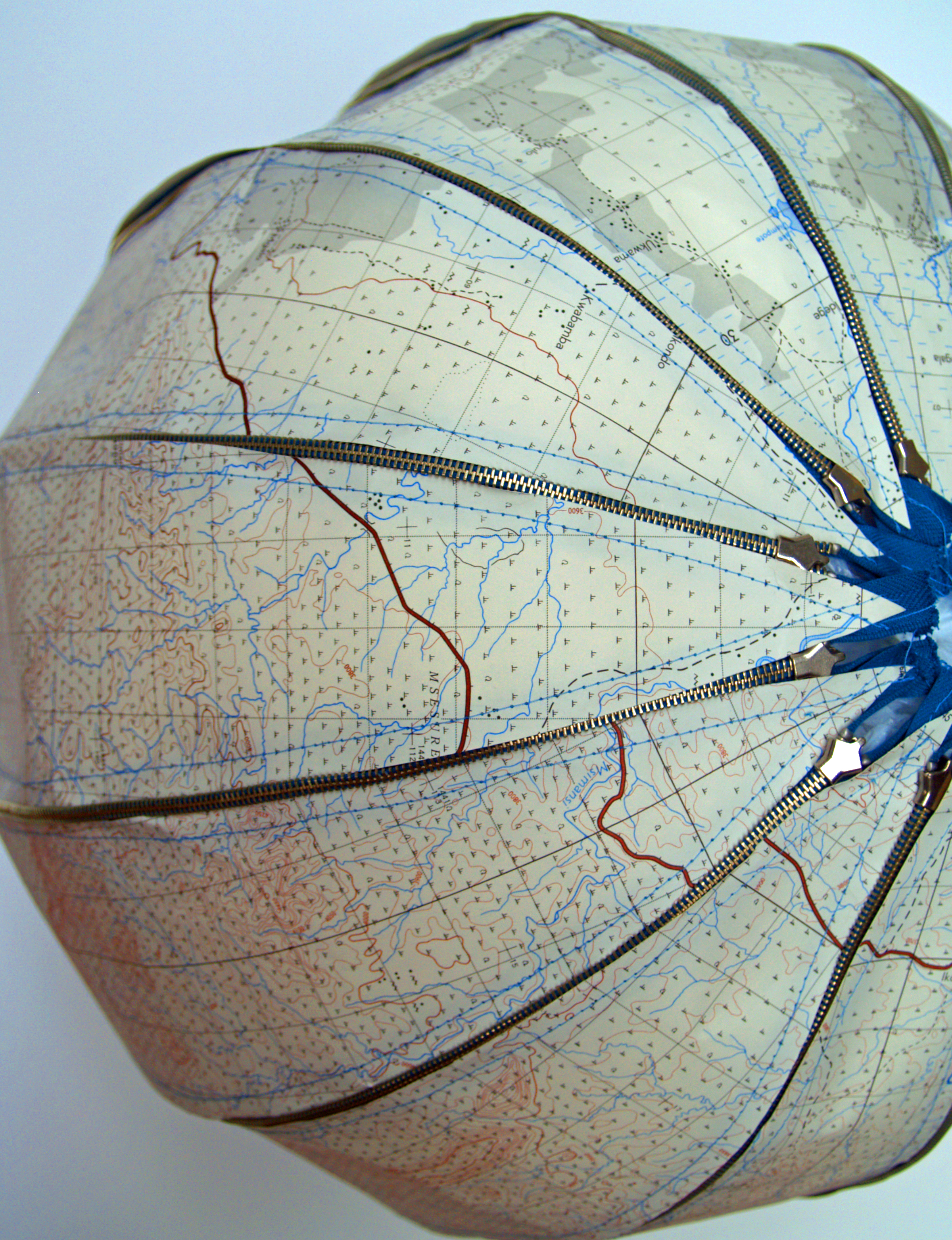
Over many years, my work has been shown as part of countless group exhibitions [to get a flavour, check out my CV if you want to try counting] as well as a number of Critically Selective Exhibitions such as the Libris Award at Mackay Artspace (2013 & 2018), The Fremantle Arts Centre Print Award, Fremantle (2012), Art on Paper Art Award, Hazelhurst Regional Galley & Art Centre (2005) and Geelong Aquisitive Print Award, Geelong (2007 & 2009).
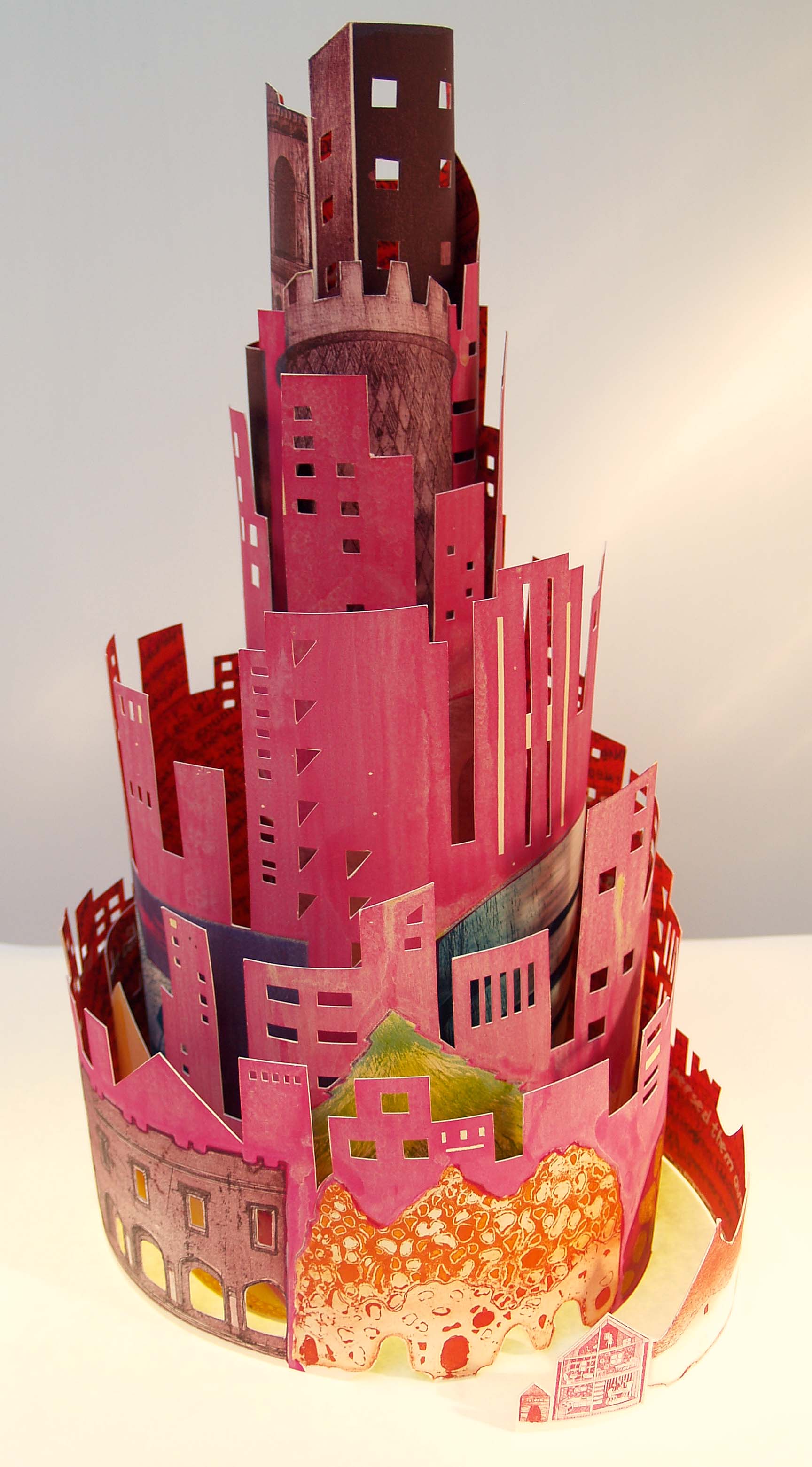
My books have been collected by The Monash University Rare Books Collection, The Baillieu Library at The University of Melbourne and The State Libraries in both Victoria and Queensland as well as workshops and special collections in Australia around the World.
Education
My path towards studying and honing specific artistic skills was meandering and I first completed a Science Degree with a lot of Psychology thrown in [my studio name is "Psyclonic" after all] and a Diploma of Education which lead to teaching mainly in the environmental area. This was not wasted as I have always had a strong interest in science, the environment and the Universe generally which informs the artistic work I do.

As an undergraduate in a Fine Art Degree at The University of Newcastle, Australia, I dabbled in the many mediums and techniques that were on offer. I would happily give my life to any one of them should I have many lives, but I was particularly drawn to etching. A lot of patience is required for any printmaking technique, as there is a lot of process involved until you reach a final and finished piece; it is not as instantaneous as placing a brush stroke of paint on a canvas - you have to be happy with a kind of delayed gratification.
I fumbled, I achieved, I experimented, I had no idea and every idea of what I was doing. The ways of understanding the world through playing and making as a child, did develop, inform and in part went towards what I was did in my formal education for my degree.
In 2005 I completed my Ph.D titled "Constructing the Eclectic Bibliothèque" (at The University of Newcastle, Australia) concerned with creating a Library of Artists’ Books in all their diversity.
.jpg?alt=media&token=cd483c98-668c-4366-b7ee-ca5a22c0490b)
Professional Career
I previously lectured in Printmaking, Print-as-Object and Foundations of Creative Arts at The University of Newcastle, Australia. Currently I am lecturing in Creative Inquiry 3D, Introduction to 3D Studies, Paper as Form and Creative industries: Visual Arts & Performance. My areas of supervision have included Paper and Printmaking.

Accolades
In 2005 my work "Pillow Book" received a finalist award at the 1st Seoul International Books Arts Competition, and in 2008, I was invited along with other international artists to show work and present a paper at the Seongnam International Bookarts Fair and Conference in South Korea.
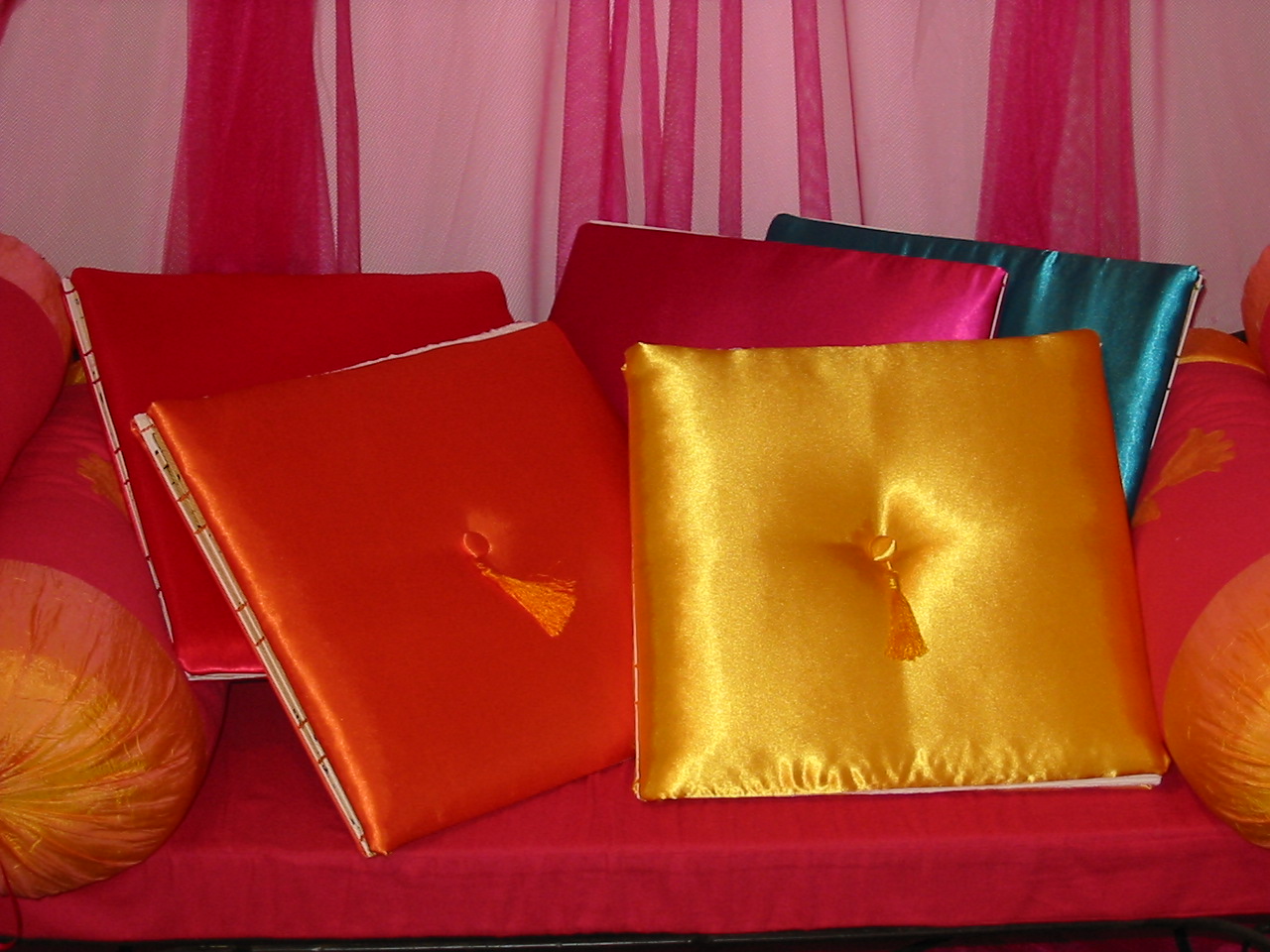
In 2016, I was the winner of the Laman Street Art Prize "Celebrating Nature" held at Back to Back Galleries, Newcastle for a work called "Finding a Place to Land". As part of the Blarney Books & Art 2014 Biblio-Art Award, Port Fairy, Victoria, I won the 3D award for an altered book based on the Icelandic volcano Eyjafjallajökull. In 2004 I was the Winner of the Print, Watercolour & Drawing Section and was Highly Commended in 2006 for the Maitland Art Prize. My Artists’ Book -"Sunny-side Up" won the Annual Student Acquisitive Art Prize at Watt Space, Newcastle [please see my CV for further details].
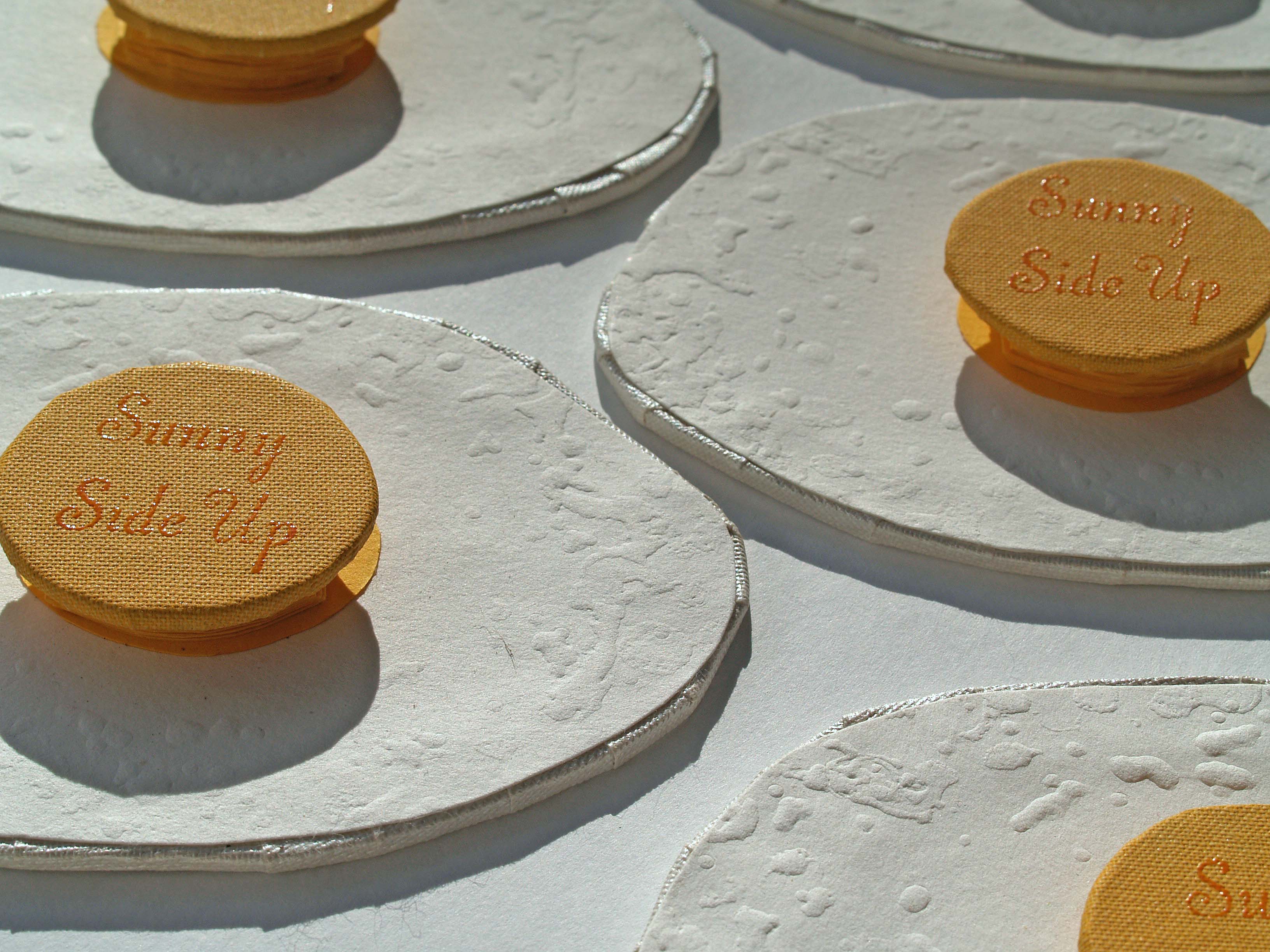

My Printmaking
I came to Printmaking in a round-about way, having returned to University to study Fine Art while working as the Displays Officer at The Shortland Wetlands Centre. I was interested in Wildlife Illustration. A friend had shown me an image he'd made using the etching technique a year or two before, so I took an Etching class along with a variety of other subjects. I knew very little about Etching (Intaglio) but was mesmerised by the layering needed to build up an image even though there were many steps involved. The 'reveal' when printing paper was peeled back from the plate was like magic, although, I look at many of my early efforts and cringe at the quality of some of my image-making. I am still pleased with some of my first attempts though.
Etching lead to studying all the other printmaking mediums - Screen-printing, Block-printing, Dry-point Intaglio, Mono-printing, Collographs, Embossing etc, and the most challenging of the print-making mediums - Lithography, which means to print from stone. Lithography is a demanding and difficult medium but I love the beautiful reticulation of a Tushce wash, the drawn line and the velvety blackness acheived by the specialised pencils and crayons. Creating a lithograph is quite like a meditation and it should be practiced daily to keep skills finely tuned - so when life intervenes, I do get a bit rusty.
I print onto beautiful artists quality paper as most Print-makers do, but I also love to experiment with other surfaces and kinds of paper such as old maps, text, dress-makers patterns, metalic papers and other kinds of patterned papers. These add further depth and meaning to the work.

Very often I use a method know as Chine-collé which pastes shaped coloured papers to parts of the page as the image is printed to add colour and extra dimensions to the image.

Another way to include more colour into a print is by hand-colouring. At times and when needed, I will use watercolours, coloured pencil, acrylic paint and inks.

Many of my exhibitions have exclusively show-cased my Prints.

Prints and Printmaking almost naturally leads to multiples of some kind; so Artists' Books have also become one of my passions.
My Artists' Books
To date, I have created over one hundred artists’ books from the very small to the very large. They include one-of-a-kind altered books, book objects, installations and sculptures. Others are editioned in small numbers using various print mediums including letterpress.
I use the motto - "Faciendi plures libros nullus est finis", as we were assured in Ecclesiastes 12-12, is that "Of making many books there is no end".
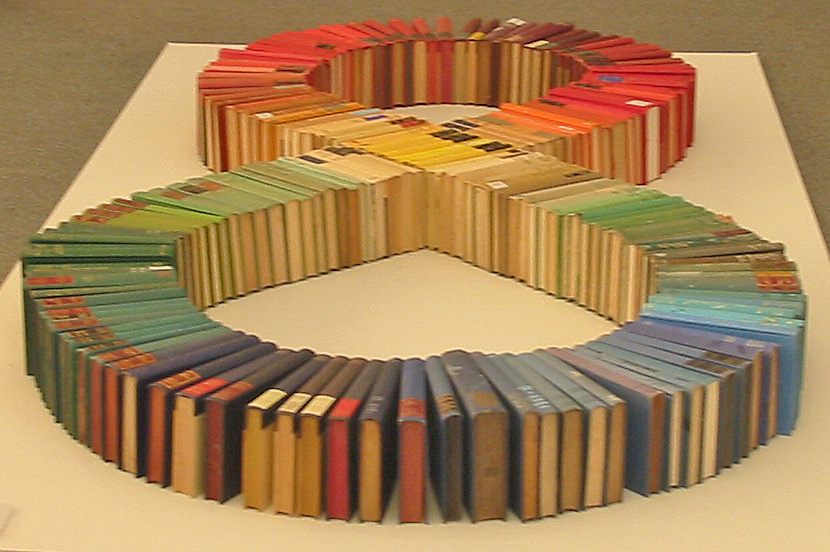
About the Artwork
Much of my image making is generated through, and occurs at the intriguing intersection of Science and Art. I return to a number of motifs including spirals which take the form of cyclones, tornadoes, twisters, whirlpools, water funnels, plant tendrils and hurricanes etc in my work. I am fascinated by the natural world and draw on both plants and animals as inspiration.
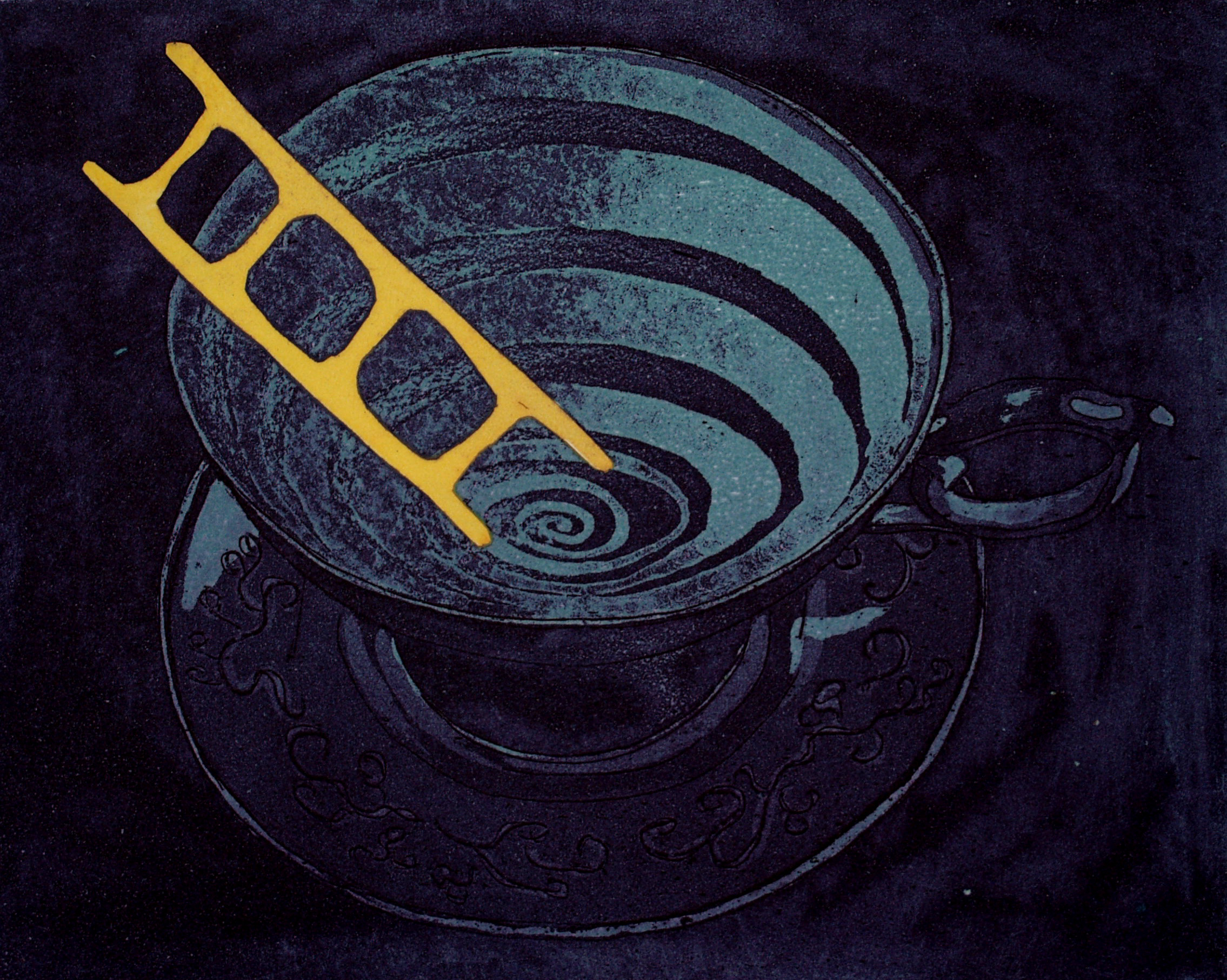
Other recurring images includes naturally formed patterns like those of animal fur, leaf patterns or rock formations which become part of the textures I use in both prints and books.
For over a decade, I have been following themes involving maps and map-making, landscapes and landforms, atlases and travel, topography and geography. I am continuing to explore this across many mediums.

I am also intrigued by the uncanny and I incorporate a Surrealist perspective to much of my work. I like to present a humorous outlook, but this is usually to draw attention to something more uncomfortable or even sinister.
About Fine Art Prints, Printmaking and Artists’ Books
Fine Art Prints are usually handmade. The printing process can be similar to commercially printed pictures such as posters or calendars; however fine-art prints are usually hand drawn or painted and then printed by hand. They use technologies that preceded the commercial printing industry and machinery and the computers that are now used to print everything - word documents, packaging and photos - in vast quantities.
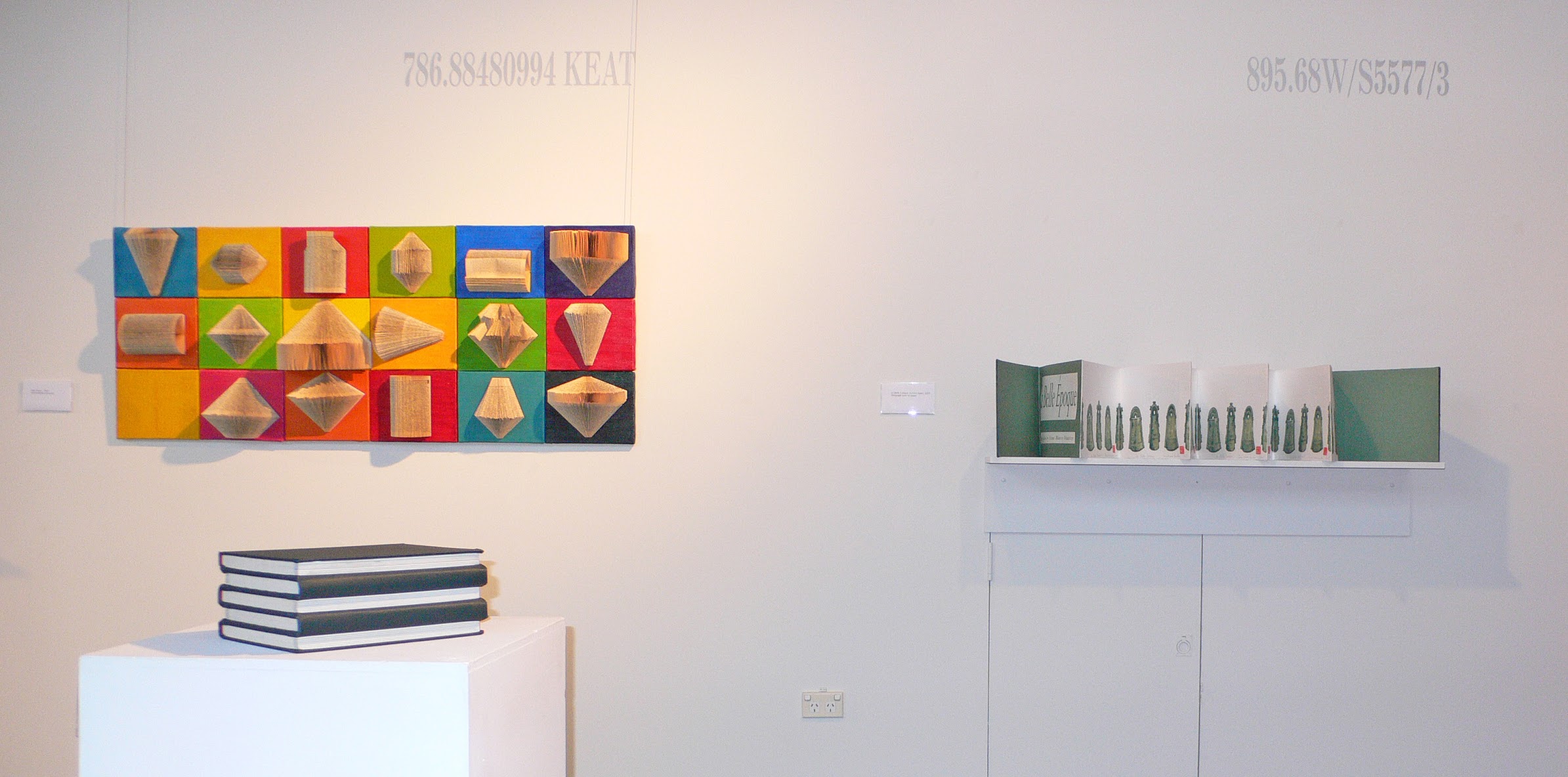
Printmaking
Printmaking is the term used for the numerous methods of producing a repeatable image – it is a medium that allows the same image to be produced more than once. Except for Screen-prints, all print mediums produce a reversed or mirror image.
About Limited Editions
Placed below the image, where the artist has signed, dated and titled the work; there may also be a number which looks like a fraction (eg 1/4) but is not. The bottom numeral refers to the size of the edition and top numeral indicates the number order of the print in the edition. So, 3/5 is the 3rd print from an edition of 5 overall.
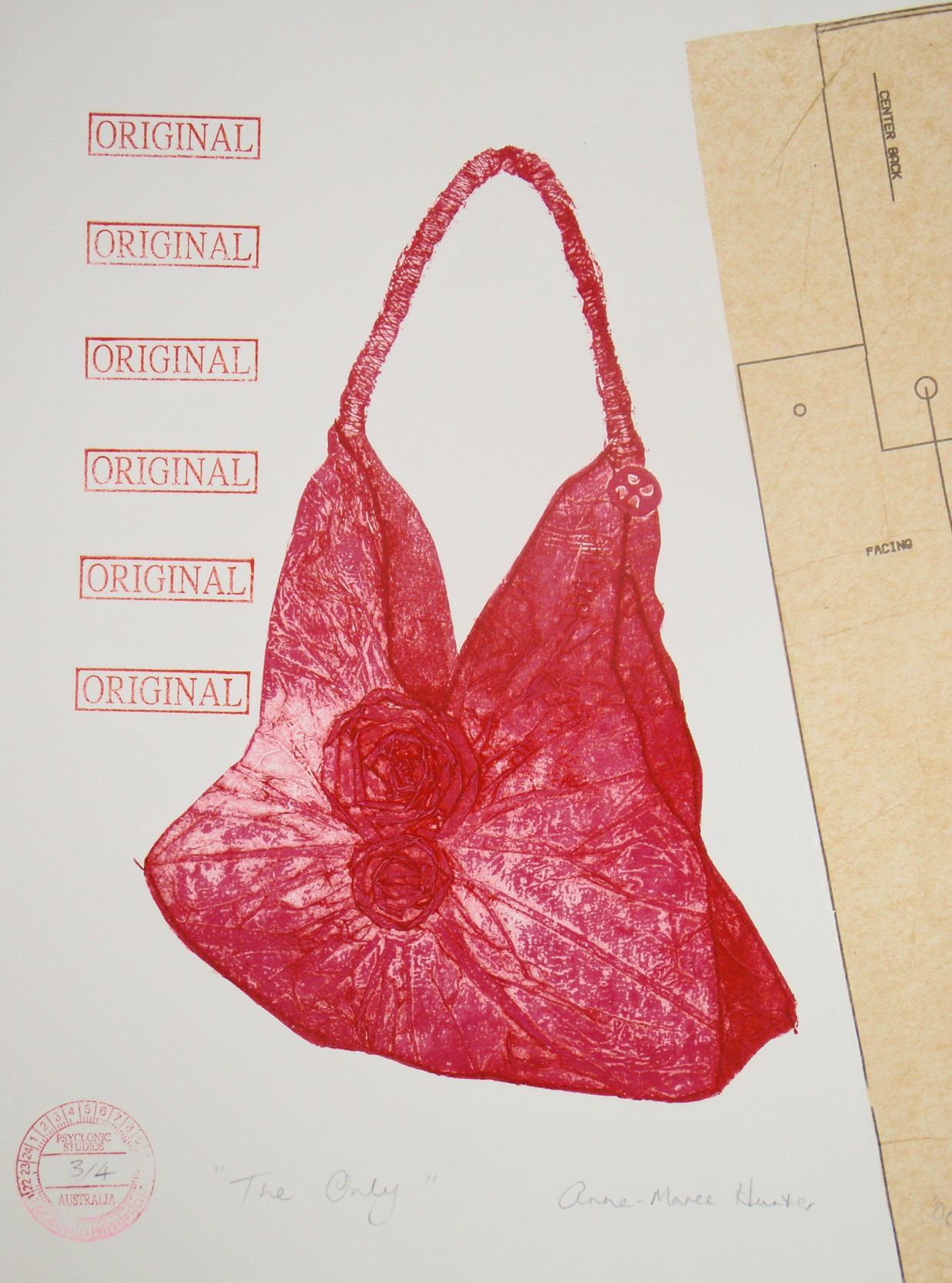
Many of my works are printed in very limited editions - often my print run is less than 10. Or they may be a unique, one-of-a-kind print.
Etching [Intaglio]
Intaglio or Etchings are printed from a sheet of metal, usually copper or zinc (but this can be Perspex). The image is drawn into a resistant coating on the metal plate and then etched in an acid bath. Where the coating has been exposed by mark-making, the acid can get in and ‘bite’ into the metal. So, the image is created below the surface. Once the plate is cleaned off, a thick buttery ink is pushed into these grooves and the surface is polished. It is then printed onto dampened paper via a printing press under a heavy pressure. The paper squeezes into the grooves to pick up the ink and reveal the image.
Lithography

To produce a Lithographic image, a drawing is made using greasy or oily crayons and inks onto a levelled and very smooth limestone slab. Once the stone is treated with Gum Arabic and a small amount of acid and other processing, the image is inked using a roller and again printed on a Lithographic Press under pressure onto paper.
Wood Block or Lino-Printing
Wood or lino is carved out to create an image. Most school students have tried a Block Print. Ink is applied to the surface of a block with a roller and the paper is laid on. The printing area is on the surface while an Etching prints from below the surface. A Block Print is usually printed by hand or with a press under a light pressure. The carved-out area will show the colour of the paper it is printed on.
Silk Screen-Printing [Serigraph]
Screen-Prints use stencils to create the image. Or separate layers can be made from photographiv screens
Usually, a variety of coloured inks in separate layers are pushed through a screen to build up an image. The cut-out areas of the stencil let the ink through the screen onto the paper. T-shirts with images are commonly are created this way.
Collagraphs
A Collagraphs can be created by using sealed cardboard. This means you can have any shape you can cut out of card although it also means that they are quite fragile, so usually only small numbers can be printed before they break down. They can be very textural; a collagraph means to glue (‘coller’) as if you where making a collage. A Collograph can be treated like an etching where the ink is pushed into the grooves and polished, or as a block print where a roller adds ink just to the surface.
I like to use a combination of the two techniques, as this can give at least two colours and often a 3rd and 4th colour where they blend.
Series
I most often work on a Series as I endevour to expand the many aspects around an idea or the subject matter that I am exploring. Many of my individual artworks fit into Series. Often, a Series develops as I am working towards an exhibition as these are usually thematic in some way. When I was working towards my major exhibtion entitled ATLAS, I created work to do with this subject area - things like Maps, Atlases, travelling, Geography and Cartography (all the 'ologies' and 'ographies' really!) etc. As I research and create imagery around specifics themes, these develop as variations and extensions to the work and 'voila' - new artwork is created. An idea or an artwork begats anew!
I work in Series across all mediums whether in Printmaking or Artists' Books & Objects. The idea around the artwork usually comes first; the medium is choosen on the best vehicle to express the idea.
Artists’ Books
Artists’ Books use the book form as the medium just as the Painter uses Paint. These books may be the recognisable Traditional Books we are familiar with, but they can also be sculptural or be altered in some way and utilise second hand books as the material. They are most often hand-made - they are not the commercially printed books about the subject of Art or an Artist. Many of my Artists’ Books incorporate my Prints that were specifically made to become part of a book.
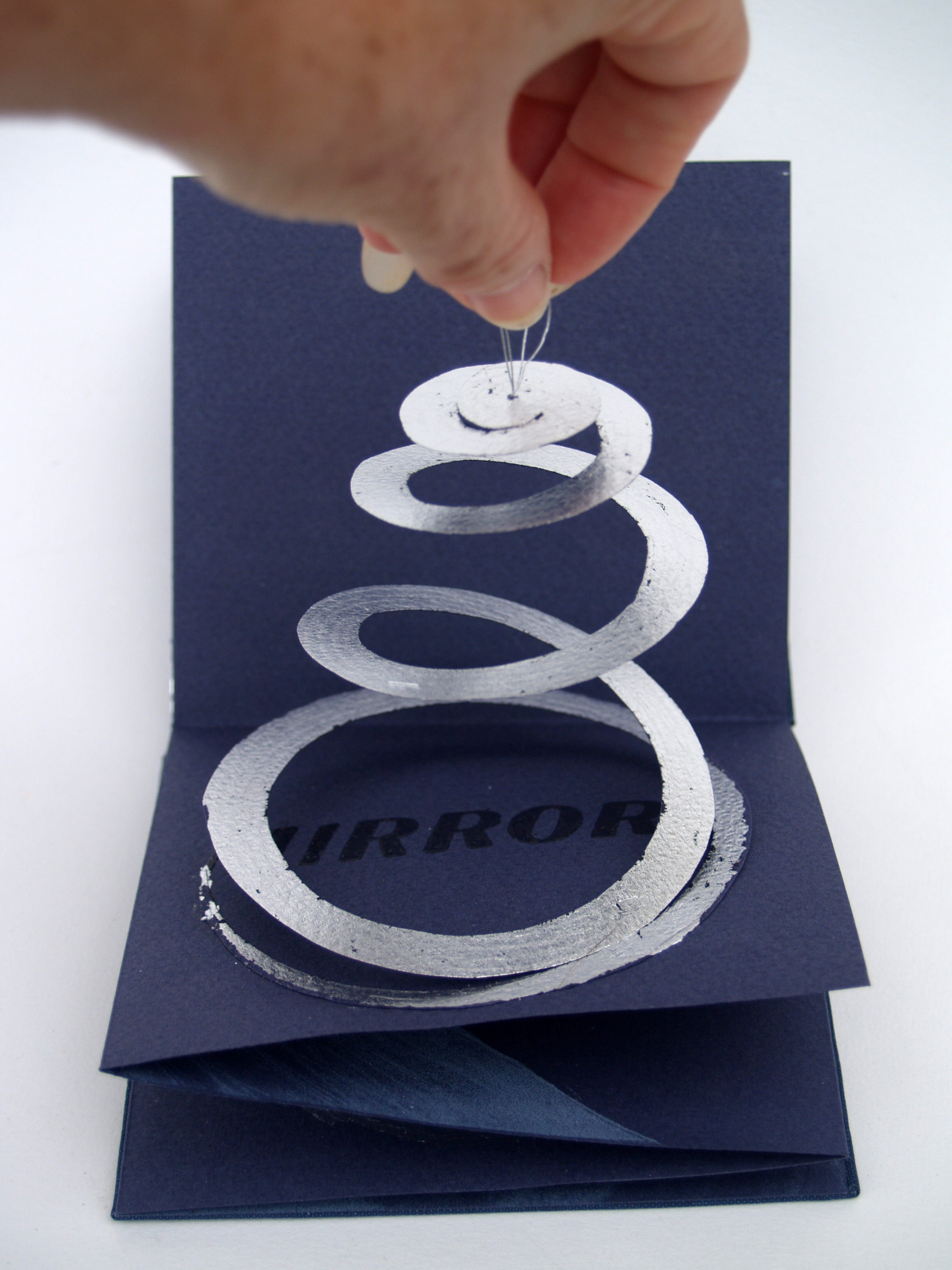
Paper, pages, ink and cloth, glue or waxed linen thread: images, fonts, sentences, letterpress-type, prints: back page, front page, title page, spine; covers, headbands, folios, colophon and codex; are just some elements of a book. The Book is complex yet enduring objects.
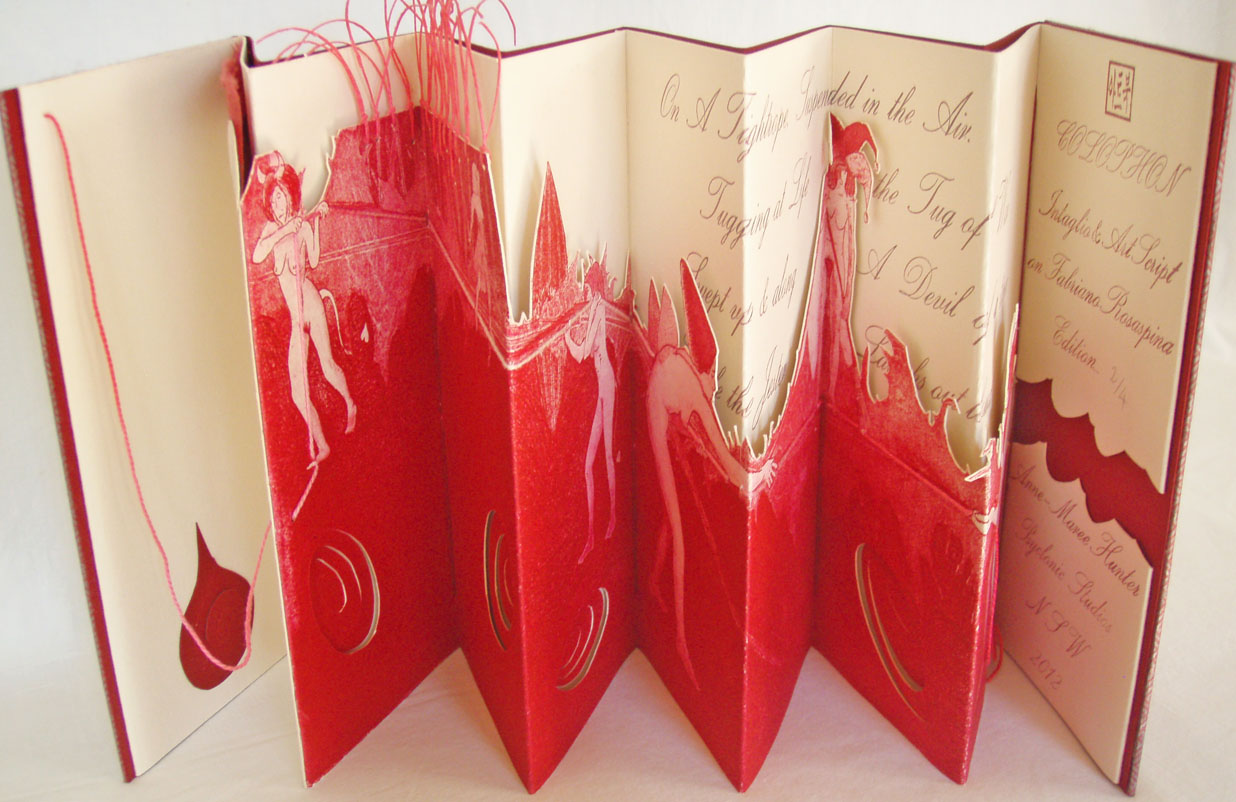
Artists’ books in the form of traditional books, altered books, experimental books and book objects make up my répertoire.
"Constructing the Eclectic Bibliothèque" – Ph.D. Exhibition and Thesis
A single book is powerful, a collection of them is mighty!

I created an exhibition of an Eclectic Library for my Ph.D., and the ideas it contained were encyclopaedic. We take books for granted because they are ubiquitous. Sometimes we forget the power they carry and how beautiful they can be. Far from becoming obsolete due the march of technology, people still want to hold books in their hands and feel the page as it is turned. It can be an intimate experience.
The book, as a format continues to exist because it is a technology that works; it has many beneficial attributes that we return to and even imitate in newer technologies and devices. The reader’s or viewer’s experience and imagination essentially "dots the i's and crosses the t's" - the book is only complete once it has been read or viewed.

Many of my books carry a sense of humour but are also intended to be thought provoking. You may never look at a book or library in the same way again.
Altered Books & Book Objects & Multiples
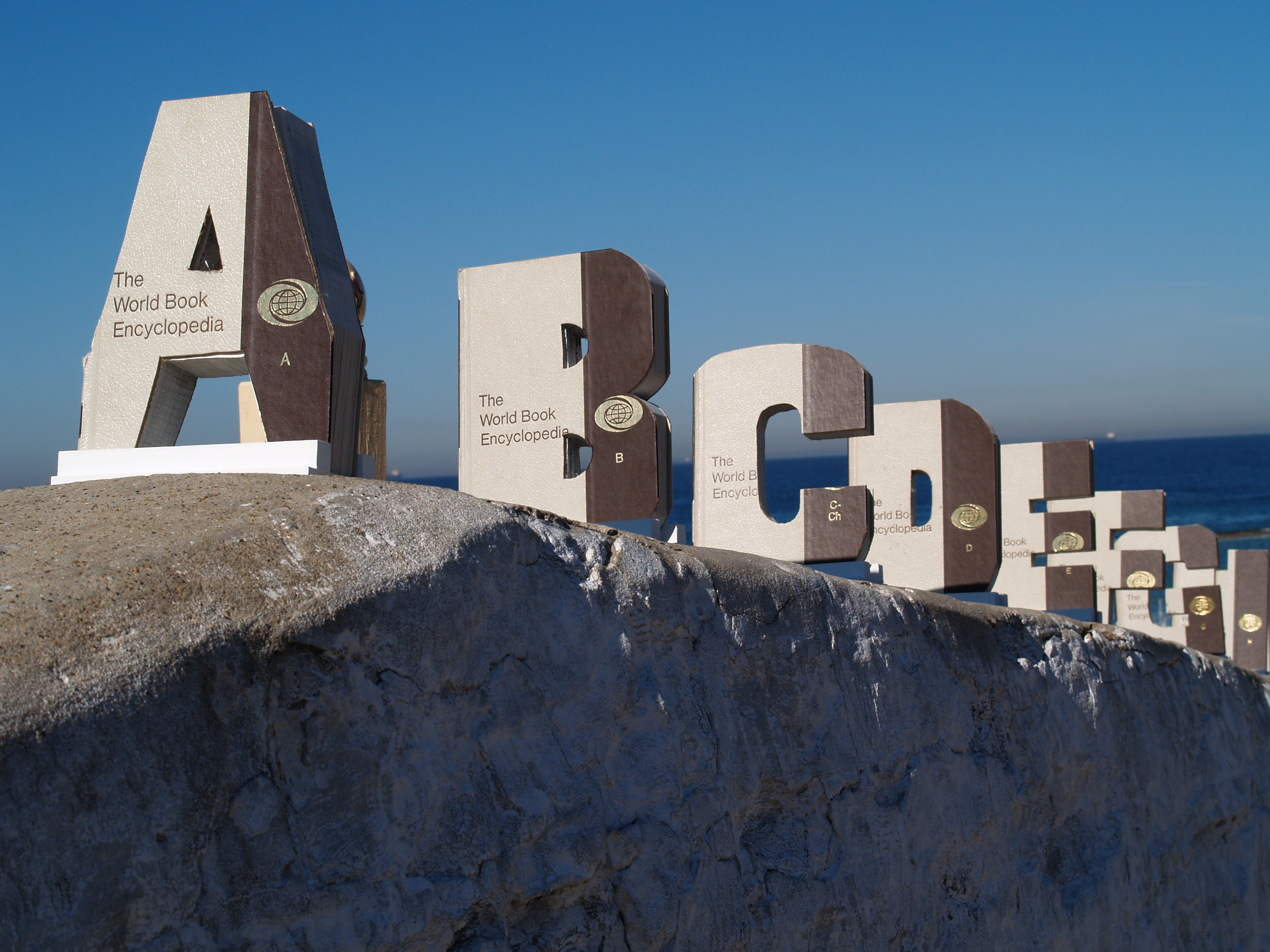
I use The Book as an 'object' and as a 'medium' to create or make sculptural artworks and Artists’ Objects. The materials may come from second hand or repurposed books. Some sculptural works use the ideas and themes surrounding books as the source for the artwork without using any part of a book.
Most of the old books I use to make artwork from were being discarded, sold or were often destined for the garbage.
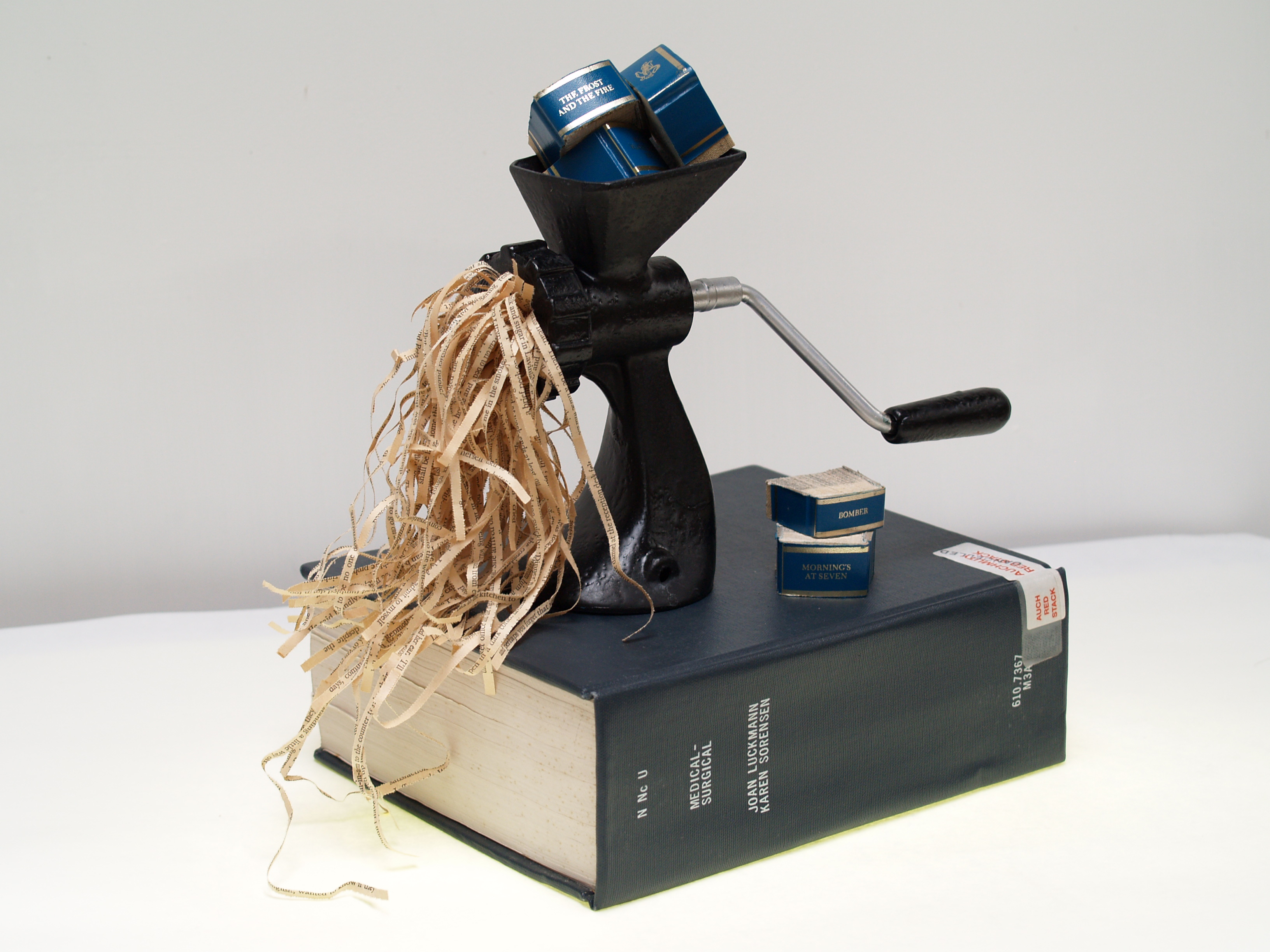
My aim is to save as many as I can and give them a new and improved life.
Please enjoy exploring the 25+ Years of my Catalogue!